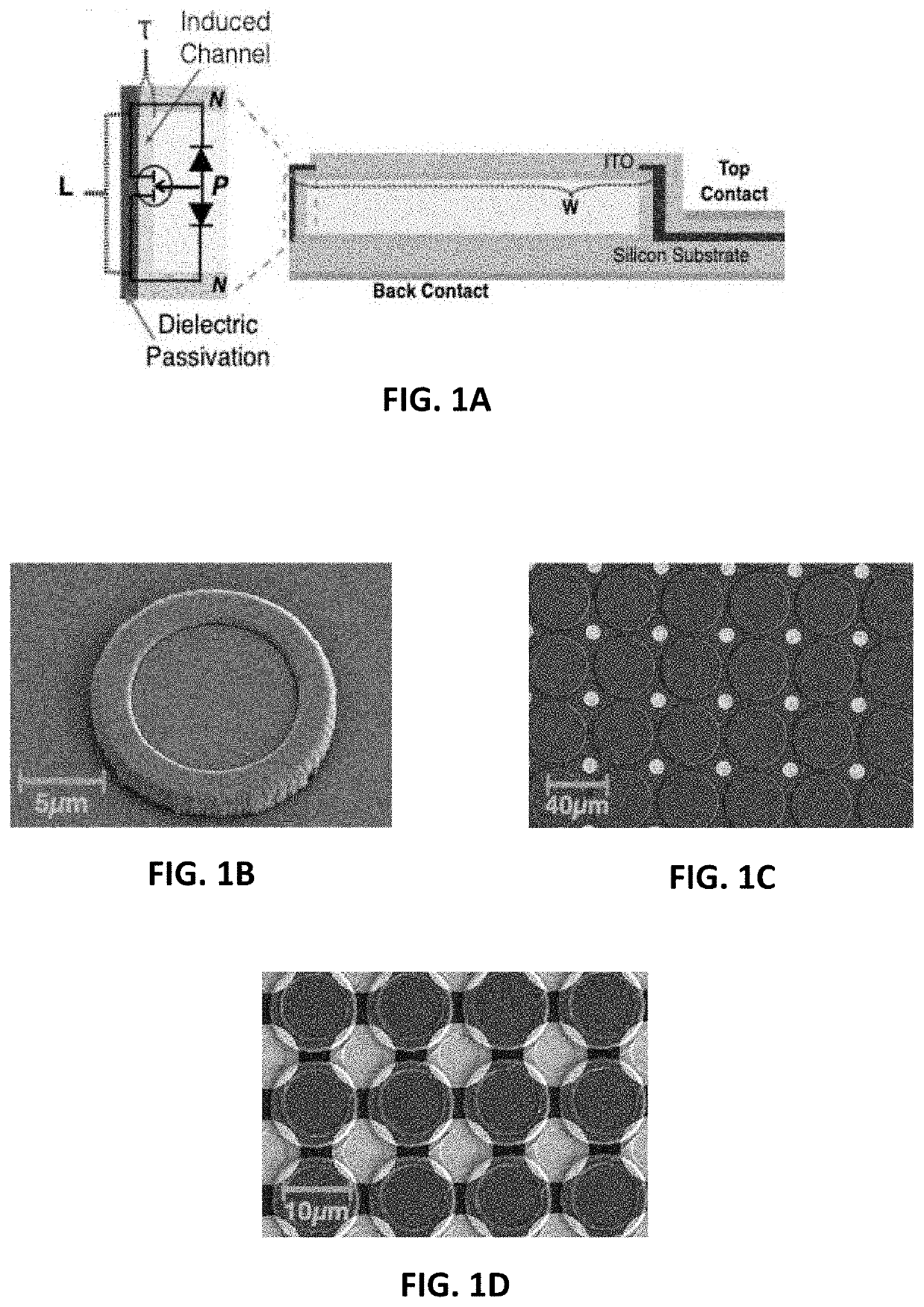Retinal prostheses
a technology of retinal prosthesis and prosthesis, applied in the field of retinal prosthesis, can solve the problems of reducing the functional range of the required hardware, and reducing the efficiency of the conversion of electrical energy into electrical energy, so as to achieve the effect of restoring high acuity vision, improving visual acuity, and avoiding sacrificing the fill factor
- Summary
- Abstract
- Description
- Claims
- Application Information
AI Technical Summary
Benefits of technology
Problems solved by technology
Method used
Image
Examples
Embodiment Construction
[0026]The present subject disclosure addresses the shortcomings of conventional retinal prostheses by providing vertically integrated photo-JFET pixel architectures and methods of use.
[0027]1. Design of Photo-JFET Pixel Architecture for Retinal Prosthesis
[0028]As shown in FIG. 1A, a vertically integrated Photo-JFET pixel may include a pair of back-to-back p / n diodes in parallel with a sidewall junction field-effect-transistor. The diodes can be configured in either a N-P-N or P-N-P configuration for a n-channel or p-channel JFET. A dielectric film is deposited on the sidewall of the silicon mesa to induce a weak inversion layer along the vertical edge of the middle layer of the back-to-back diode, forming a vertical channel along the mesa sidewall. Silicon dioxide (SiO2) or aluminum oxide (Al2O3), or other applicable material, may be used to control the pinch-off voltage of the sidewall JFET. A voltage bias applied across the top and bottom diodes can provide drain-source voltage (V...
PUM
 Login to View More
Login to View More Abstract
Description
Claims
Application Information
 Login to View More
Login to View More - R&D
- Intellectual Property
- Life Sciences
- Materials
- Tech Scout
- Unparalleled Data Quality
- Higher Quality Content
- 60% Fewer Hallucinations
Browse by: Latest US Patents, China's latest patents, Technical Efficacy Thesaurus, Application Domain, Technology Topic, Popular Technical Reports.
© 2025 PatSnap. All rights reserved.Legal|Privacy policy|Modern Slavery Act Transparency Statement|Sitemap|About US| Contact US: help@patsnap.com



